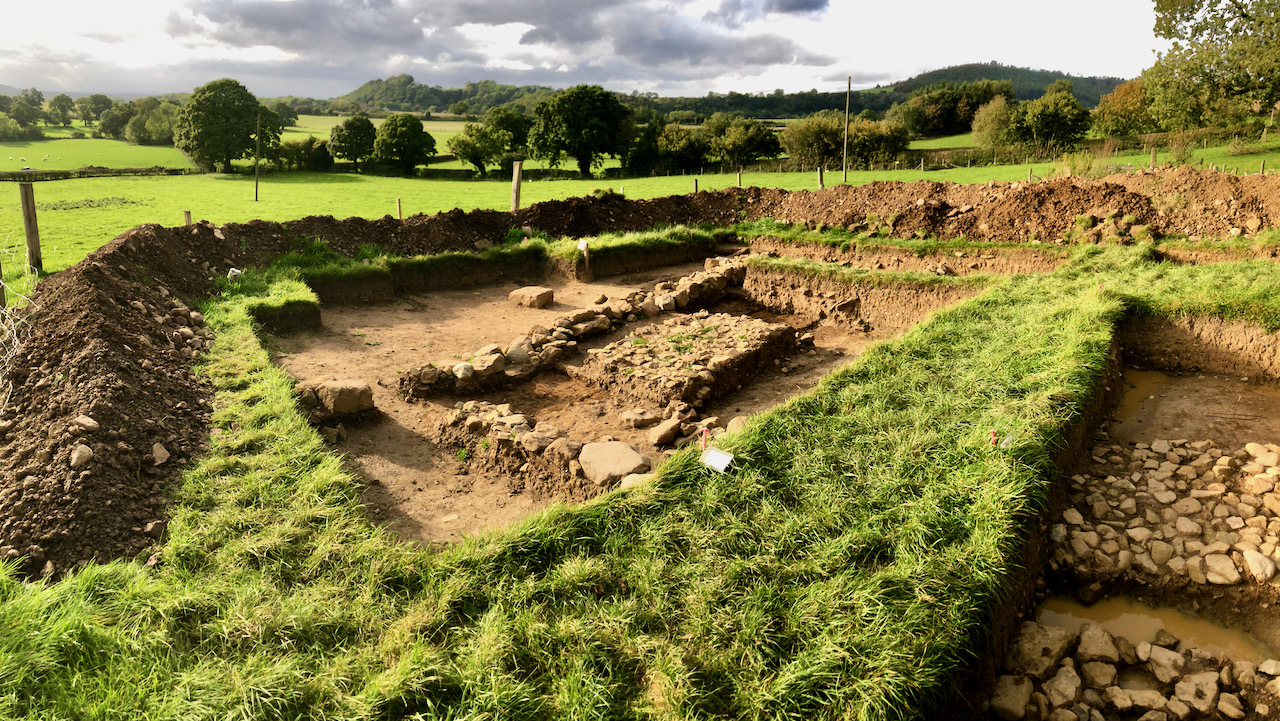My Wednesdays are spent at an archaeological dig at the medieval chapel site in Kildale and on my penultimate day for this season, a reflection of the progress so far. We’ve unearthed a further trove of pottery, yet raised more questions than answers.
This season started with six tidy two-metre square test trenches, but they sort of expanded, merging together. We uncovered some lower courses of stone walls. These walls probably aren’t thick enough to shout “building”, so they were probably part of some old paddock or something.
Then, there was this peculiar line of small stones, like a rocky pathway, with a distinct right-angled corner. Jokingly, it was called the cloister, but there was no evidence of a roof or anything fancy. Our best guess is that we’re in part of a garden associated with the chapel.
In addition to the usual medieval pottery, we have stumbled upon some sherds from way back in Romano-British times, a few Mesolithic flints, and some faint hints of ditches and postholes. It’s all a bit of a head-scratcher, but maybe that’s what keeps us coming back for more.
Amidst all this jumble of stones and pottery, the history of this long-lost chapel is worth recalling.
A Potted History
Back in the 13th century, somewhere between 1235 and 1257 (the exact year remains a mystery), Sir William de Percy, the bigwig Lord of the Manor in Kildale, made a generous gesture. He handed over the Chapel of St. Hilda, nestled just outside one of his three deer parks in Kildale, to the holy canons of Healaugh Park Priory, an Augustinian monastic house, about two miles north of Tadcaster.
Now, that wasn’t all he did. Sir William tossed in a few parcels of land in Kildale to support the chapel, an annual rent of 2 marks from his water mill, the exclusive right to grind corn at that mill, and a steady supply of corn and malt for the monks at the chapel. All this was intended to secure some spiritual perks for the souls of him and his family for eternity. The charters hint that an existing chapel might’ve been handed over, so its origins could trace back even further.
In return for these goodies, the canons had a job to do. They had to provide two priests to do their divine duty in the chapel. Sir William’s son, Sir Arnold de Percy, eventually eased the requirement down to just one priest. Sometime in the late 13th or early 14th century, the Prior of Healaugh thought it was time to give it all back, the chapel and all the Kildale land, to Sir Arnold.
This gave Sir Arnold the green light to allow the Brothers of the Cross, also known as the Crutched Friars, to make use of the chapel, and to pray for the souls of his family. He tossed in the land as well. This must’ve happened sometime before 1310, because that year saw a “Pardon to the prior and brethren of Kyldale for acquiring in mortmain, without licence, from Arnald de Percy a messuage and 10 acres of land in Kyldale, co. York; with restitution of the same“. You see, in those days, when you inherited land, it was like hitting the King’s jackpot in terms of taxes. But if you gave it to the Church, well, that was a whole different story. They called that “mortmain,” or literally, “dead hand“, meaning the Church never died.
In 1312, Archbishop Greenfield of York raised his eyebrows. He had noticed that the Brothers of the Cross were on his turf without his or the Pope’s permission, and performing their holy rituals in places that hadn’t been dedicated. There was also some grumbling from the local parish priest in Kildale that he was losing out because his flock was sneaking off to the chapel instead of attending his church. A year of dilly-dallying followed, and on 3rd February, 1314/15, the Archdeacon of Cleveland dropped the hammer. He slapped an interdiction on the Brothers, forbidding them from carrying out divine services. And just like that, the Crutched Friars packed up and left Kildale, never to darken its doorstep again. And with that, the Chapel of St. Hilda disappeared from the historical record.

Leave a Reply